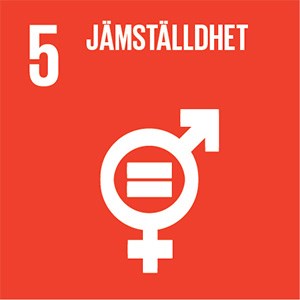Contact
Southern Swedish Forest Research Centre
Elias Andersson
Southern Swedish Forest Research Centre
Phone: +46 90 786 83 58
elias.andersson@slu.se

"There was an important job to be done and Everybody was sure that Somebody would do it. Anybody could have done it, but Nobody did it. Somebody got angry about that, because it was Everybody’s job. Everybody thought Anybody could do it, but Nobody realised that Everybody wouldn’t do it. It ended up that Everybody blamed Somebody when Nobody did what Anybody could have."
This is the story about Everybody, Somebody, Anybody, and Nobody, a clever way of describing how tasks with a shared responsibility may be overlooked, resulting in nothing being done. A little bit like cleaning out the tumble dryer’s filter in the communal laundry room.
Think about the following questions while reading the rest of the text: Who takes greater social responsibility in your workplace, starts the whip around for the doctoral student’s post-thesis defence present, is part of the coordination group or organises a seminar series? Since this work – often described as ‘academic housekeeping’ – is of low academic merit, the answers to these questions, i.e. how these tasks are distributed, have a great impact on career opportunities.
The problem with the uneven distribution of shared tasks can often be summarised as gender inequality. Studies show how there is gender segregation in the forestry sector, where there is an uneven representation of men and women in various areas and positions (1). And women are more vulnerable to harassment and victimisation both within forestry and academia (2).
Looking back, we can see that we have made progress with the work with gender equality. We have come a long way since the academic world comprised solely of men. Particularly given that almost 70 years have passed since the first woman began studying forestry at an advanced level, and that roughly 25 years ago, the first woman was awarded her Degree of Doctor of Philosophy in Forestry from the Faculty of Forest Sciences. Despite this progress, much remains to be done; the key to success lies in understanding why, how, and who must take responsibility.
The short answer: in order to enrich our organisation, and because we must. This can involve widening recruitment and creating the conditions necessary so people from various backgrounds can see themselves working with forestry subjects and contexts. In SLU’s case – also in our role as a public authority – this boils down to the basic values of central government authorities and their origin in democratic principles and respect for everyone’s equal worth. The overall objective of the Swedish gender equality policy established by the Riksdag is that ‘women and men shall have the same power to shape society and their own lives’ and this forms both the guidance and the answer to the question of ‘why’.
The strategies for this work – and consequent methods – are also defined by policy. It is predominantly a case of integrating gender equality perspectives into the organisation and its various decisions. Who will benefit from the decisions being taken and the way the organisation is run? Tools such as gender equality budgeting and gender mainstreaming help us understand and change areas such as resource allocation and who is given space in the classroom through different types of instruction and the content of forestry subjects.
So what distinct action is being taken? It is important that staff are equipped to understand, discuss and act – and through this become a part of the shared work with gender equality. The faculty’s course on gender equality and equal opportunities is one example of a distinct measure being taken. Another example is the gender equality council in the forestry sector, bringing operators within the sector together to promote its overall development.
In order to succeed with the continuing work, the question is who is responsible and will take responsibility for gender equality. Legislation and public authority guidelines stipulate that the formal responsibility is held by employers and education providers. When the responsibility is allocated to several people, it can easily be overlooked – as the story about Everybody, Somebody and Nobody illustrates. To avoid this, we need to be clear about where the primary responsibility lies for pursuing this systematic work. This alone enables us to create a common purpose and clear expectations to ensure that no task is forgotten, regardless of whether this is cleaning a filter or creating a more gender-equal workplace.
P.S. How did you answer the questions I asked at the start of this text? If your name was not among the list of answers, it is important that you reflect upon why and bring this to the discussions in your workplace. We are all each other’s work environment, but based on our organisation, our responsibilities and powers are not equally distributed.
Elias Andersson, Deputy Dean for Gender Equality and Equal Opportunities
(1) Andersson & Johansson (2022) 10 år med jämställdhet på den skogliga agendan
(2) KI (2022) Genusbaserad utsatthet och sexuella trakasserier i svensk högskolesektor
Southern Swedish Forest Research Centre
Phone: +46 90 786 83 58
elias.andersson@slu.se